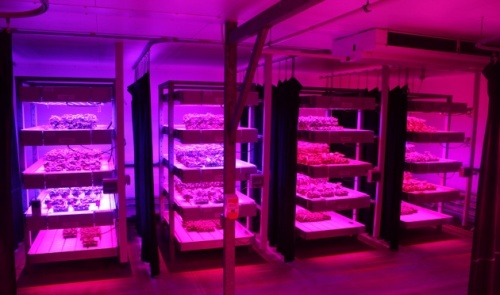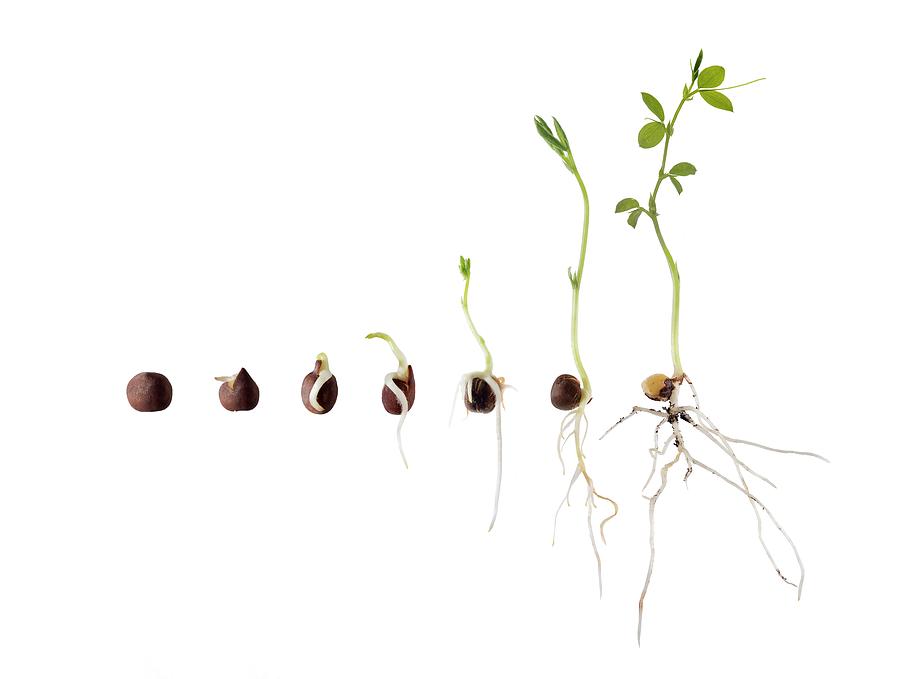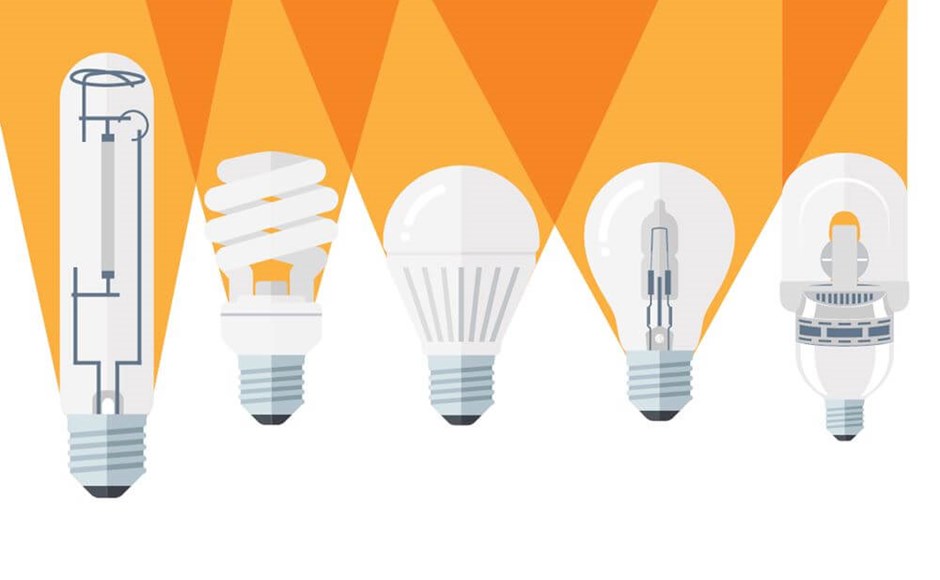
Everything seems very simple: I bought a lamp and hung it up... but it is not.
What is the use of LED lights?
Plant lights are used for successful seedling and greening, but if we talk about powerful professional lights, then they will be used for the full cycle of flowering and fruiting plants.
vegetation. seedling. This is very important during the first few weeks of plant life (vegetation)-the further development of plants depends on the quality of light and nutrients (fertilizers and stimulants). Choosing high-quality lights is extremely important, because this will ultimately determine how much fruit (flowers) you get.
Dothwaite. Many growers believe that plants lack light only in winter, but this is not always the case. Depending on the conditions, the location of plants depends on the amount of light they receive. Sometimes, there is not enough light passing through the balcony or window glass, and there is not enough time for "sunbathing". In order to make up for the lack of light, Groumeer recommends using a small and economical assistant-LED plant lights.
Full cycle. Most of the LED bulbs available in the Groomer store are suitable for all stages of factory development. With this light, plants can be grown in places where there is no light at all.
Many of our customers grow various plants in the attic, basement, bathroom and living room. But the most popular places are planting boxes or planting tents. You can talk about where to grow for a long time, so we will try not to leave the main topic, just a brief explanation: if you do it right, you can not only provide yourself with vegetables, but also provide yourself with tomatoes, cucumbers, peppers, Strawberry etc. For suggestions, please contact the Groomer store.
How to choose a lamp for plant lighting?
You need to handle this problem correctly:
You need to find the plants you want to highlight. (The choice of spectrum and power.) More information about this content.
Which area needs lighting. Is it a window or a balcony? Your choice will depend on where the flowers will grow and the area that needs to be illuminated.
How far is it from the plant. It is recommended to choose plants of the same height. If the height of the plants is different, but the requirements of the plants are the same, there is no need to buy other lights, just put something under the pots of small plants.
What is the most important stage in your flower development?
What do you want to achieve from the factory? Greener? Lots of delicious fruits?
Make sure to calculate the daily backlight time and the required light intensity. More content below.
Types of plants, their developmental stages and their needs:

Seeds need all-weather light in the first few days after germination, and the daylight hours are gradually reduced to 16-14 hours a day;
Plants that like to pause animation in winter-Decembrist, Zamioculcas, Kalanchoe, Poinsettia, etc. Therefore, in the cold season, the daytime should not exceed 8-10 hours;
The plants that need partial shade are all the flowers of the Aroid family: Anthurium, Hulk, Ulaanbazan (common violet), fern, and common grass (red pine). They all grow well under the light of 2.5 lux to 3000 lux.
For normal growth, plants that require very bright light (up to 6-7 kilolux): passionflower, cactus (except epiphytic species), geranium (geranium), olive (jasmine), myrtle (eucalyptus, peach gold) Mother), most roses.
Medium photophilic plants: orchids, pomegranates, peppers, tomatoes, gerberas, chrysanthemums.
Where can I buy LED plant lights?
In the category of Led seedling lights-you will find led lights that do not require special operating conditions.
Some of them are easy to install in conventional household lamps (E27). If you don't have a lamp with an E27 base, you can buy sockets, wires and plugs in our shop. Others include plugs and wires, which can be plugged directly into sockets. There are also some models that require special lights (T8). Groomer invites you to create optimal seedling growth conditions and use these lights to illuminate your favorite flowers-the range will make you happy.
Which lamp is good for what?
Plant tapes of different powers-suitable for prolonging the daylight time, as plant lighting. Many people choose this option due to the low price, but you should not expect the best results with this lamp. In order to completely enclose the plants in a closed space, most of these lights are not suitable.
Economical plant lights with a power of 5-20 W are very suitable for supplementary lighting of one or two plants. Such LED lights are placed on balconies, windows, and small growing tents. In most cases, they are used to extend the day.
The LED plant light with a power of 75-180 W is suitable for additional lighting of small growing tents or plants.
LED lamps with a power of 225 W or higher are suitable for complete lighting of plants-with this LED panel, natural light is not needed! Any grower who puts these lights in a growing box or growing tent will get excellent results! If you don't have the opportunity to buy a special growing tent, don't worry-almost any room can be used as a greenhouse-you just need to do this!
If you are interested in LED lamps for planting boxes, farmhouses and greenhouses, you can view them in the following category: LED lamps. Plant light.
Advantages of LED lights:
lSave. LED consumes very little power.
l Long-term work. Some ice lamps can work continuously for many years, with a service life of 20,000-50,000 hours.
lEasy location and use. The lamp is easy to place in any convenient place, and can also be used in planting boxes and planting tents. Many LED bulbs can be placed horizontally and vertically.
lLED lighting has many uses because it is suitable for any type of cultivation-ground, hydroponics and aviation botany.
lNo ballast required. Unlike HPS lamps, LED lamps do not require expensive purchases in the form of chokes and izu.
lNo special lights-Culber or mirrors are required.
lHigh light output.
lSafety. These lamps do not contain harmful and harmful gases, mercury and other harmful substances.
Disadvantages of LED lights:
The main disadvantage of LED lights is their price. However, if you think about it and count everything, then this is not the case. Yes, you will spend a lot of money, but the purchase will be rewarded: due to long service life, energy saving, increased yield and flowers. It is also worth noting that the growth rate of the plant will be higher and all stages of the plant will be faster, which will shorten the time from seed to harvest. This means you can spend less time and effort, and you can reduce the amount of expensive fertilizers. It turns out that considering all the advantages, this negative value is not that important.
Light required for seedlings:
Lx is a lux unit.
5000-6000 lux for tomatoes, 3000-4000 lux for pepper crops, 4000-6000 lux for beans, 4000-6000 lux for banana crops, 3000-3900 lux for tea crops
day:
Tomato seedlings-16 hours. Tomato seedlings -14 hours. Cucumber-13-15 hours. Pepper-9-10 hours. Cabbage-16 hours.
A list of options for artificial lighting of plants:
The following types of lights are suitable for artificial lighting of plants:

luminescent. (Energy Saving, ESL) An economical choice that has stood the test of time, but unfortunately, their light output is not as good as other types of plant lighting. It is most often used as auxiliary lighting.
Sodium gas discharge lamp. (DNaT, DNaZ, NL, NLND, NLVD, curved tubular sodium)-The lamp is the most popular among growers. When planting plants under any conditions, lighting with the help of HPS can bring excellent results: planting boxes, planting tents, greenhouses, but it is not suitable for growing indoors or on balconies-too bright light can hurt people's eyes.
Metal halide. (MGL, DRI)-They are ideal only in the growing season, as they require more yellow spectrum (HPS) flowering light. The HPS and DRI lamps used in factories are expensive lamps that require other equipment (chokes, izu) to be installed. Such lamps have stood the test of time and can provide excellent results, but they are not suitable for illuminating plants on balconies, windowsills or just in apartments without extra special protection. They are suitable for growing in greenhouses, planting boxes, tents and specially equipped houses.
LED. (LED) LED lighting is the future. Many experienced breeders who rely on HPS for their growth are willing to switch to LED lights. Among all the types of artificial lighting that exist in our time, the future belongs to LED lights for plants.























